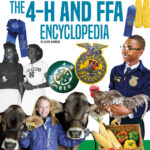Animal cruelty, a grievous transgression against the sentient beings with whom we share our planet, manifests in various forms that evoke profound moral quandaries. This malfeasance, defined broadly as the infliction of suffering or harm upon animals, operates through acts of violence, negligence, or exploitation. It is as if a shadow looms over the innocent, a specter of indifference that renders their plight invisible to many. The question of what constitutes cruelty to animals has evolved, drawn through the currents of history and the nuances of cultural perceptions, leading to a complex tapestry of understandings and ethical considerations.
Historically, the roots of animal cruelty can be traced back to ancient civilizations. In Mesopotamia, early legal codes recognized certain rights for animals, although these were often overshadowed by economic interests. As society shifted towards agrarian economies, the utilitarian approach to animals predominated. Livestock were not merely tools for labor or food; they were integral to survival, yet they were often subject to harsh treatment. The emergence of philosophical thought, particularly in the works of thinkers like Aristotle, posited a hierarchy of living beings, wherein animals were deemed inferior and largely devoid of moral consideration. This philosophical underpinning facilitated the normalization of cruelty as a necessary byproduct of human dominion.
Cultural perspectives towards animals form a prism through which the concept of cruelty is refracted. In certain traditions, animals are revered and imbued with spiritual significance. For example, in Hinduism, cows are considered sacred, and their mistreatment is viewed not only as an affront to nature but as a transgression against the divine order. Conversely, in some cultures, animals have been historically perceived as mere commodities, leading to systemic abuses that are often justified by economic necessity. This dichotomy underscores the complexity of addressing animal cruelty, revealing how deeply entrenched societal values shape our interactions with non-human creatures.
In contemporary discourse, the definition of animal cruelty has expanded significantly. Legal frameworks now encompass various categories of maltreatment, ranging from overt acts of violence—such as beating, torturing, or killing— to more insidious forms of neglect, like failing to provide adequate food, water, or shelter. The recognition of psychological suffering is also gaining traction; animals, as sentient beings, experience fear and distress, which should be factored into our understanding of cruelty. Thus, actions that may seem less overtly damaging than overt violence can still be profoundly harmful. This nuanced understanding aligns with a more compassionate and enlightened perspective of the interrelation between humans and animals.
Animal cruelty can also be observed within industries that prioritize profit over welfare. The factory farming system epitomizes such exploitation, wherein animals are often raised in deplorable conditions, deprived of their natural behaviors. It is a grim reality that highlights a systematic cruelty hidden behind the façade of efficiency and economic growth. The metaphor of the “machine” comes to mind, where living beings become cogs, stripped of individuality and subjected to relentless cycles of production. This mechanization of life not only dulls ethical sensibilities but also desensitizes society to the suffering inherent in such systems.
The rise of animal rights movements in the latter half of the twentieth century has prompted significant shifts in public awareness and attitudes toward animal cruelty. Influential texts, such as Peter Singer’s “Animal Liberation,” challenged the prevailing paradigms and urged society to reconsider the moral implications of our treatment of animals. Advocacy for better welfare standards has gained momentum, with campaigns aimed at exposing the harsh realities faced by animals in entertainment, research, and agriculture. Legislation has slowly evolved to reflect these changing attitudes; yet, the enforcement and scope of these laws often falter, revealing a chasm between intention and action.
Globally, animal cruelty laws vary widely, reflecting the cultural and ethical landscapes from which they arise. In countries like Sweden and Switzerland, stringent animal welfare standards are enshrined in law, highlighting a societal commitment to protecting animal rights. In contrast, in nations where economic imperatives supersede ethical considerations, laws may remain loose and poorly enforced, allowing cruelty to persist unabated. This variance conjures the image of a fractured mirror, where each shard represents a different societal view and legal approach toward the treatment of animals. The challenge lies in bridging this divide, fostering a universal ethos of compassion and respect across cultures.
Moreover, advancements in science have contributed to our understanding of animal sentience, further galvanizing the case against cruelty. Research has revealed that many species possess cognitive capacities and emotional depth previously unrecognized. With this knowledge comes a profound responsibility; recognizing animals as sentient beings obligates society to extend moral consideration and cultivate humane practices. This evolution in perspective demands an ongoing dialogue about the ethical implications of our choices, reinforcing the necessity of advocacy and education in addressing animal cruelty.
In conclusion, the question of what constitutes cruelty to animals is not simply a matter of defining abusive acts; it is an invitation to reflect on our ethical framework and cultural values. As we unravel the intricate threads of history, societal norms, and scientific inquiry, we begin to comprehend the profound implications of our actions toward non-human beings. Cultivating empathy and respect fosters a deeper connection between humans and animals, illuminating the path toward a more compassionate coexistence. In this quest for justice, it is imperative that we not only recognize the cruelty that exists but also strive to dismantle it systematically, ensuring a future where animals are treated with the dignity they inherently deserve.






